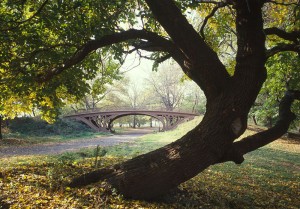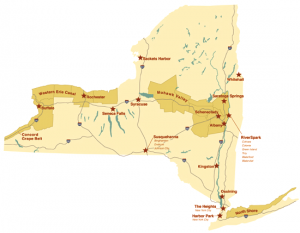By Paul M. Bray

As a member of the World Commission on Protected Areas, I’ve met park managers and activists from all parts of the world. I have seen how America’s National Parks are well known internationally. The National Park System is called the best idea America has ever had. The National Park Service is renowned for its skill in managing parks from Yellowstone, known as the mecca of parks, to portions of Lowell, Mass., an old industrial city.
But New York state has not gotten such national and international attention for its great parks and protected areas.
Consider the state’s protection of wilderness areas.
One of the nation’s most important environmental laws turned 50 this year: the Wilderness Act. New York played an important role in its establishment. The state passed a constitutional amendment in 1894 declaring the public land within the boundaries of the Adirondack and Catskill Parks shall remain “forever wild.” This is the only constitutionally protected wild land in the nation, a large portion of which is being managed as “wilderness.”
Howard Zahniser, former leader of the Wilderness Society, was instrumental in the creation of the Wilderness Law. Zahniser had a cabin in the Adirondack Park near a cabin owned by Paul Schaefer, a leading advocate for protecting New York’s forest preserve. Zahniser was impressed by the forest preserve and spent many hours talking with Schaefer about New York’s experience with the forest preserve.
Like our National Park System, New York has a wide range of top notch parks and protected areas. Frederick Law Olmsted’s Central Park and Prospect Park in New York City are renowned as urban pastoral gardens. Olmsted also selected the location of Albany’s Washington Park. Regrettably, Albany’s city fathers rejected Olmsted’s insistence on designing a coordinated system of parks and parkways, and he moved on to Buffalo, where he went on to do just that, the first such system of its kind in the country.
In 1892, the state established the vast Adirondack Park, which is now 6 million acres in size. It was followed in the early 20th century by the Catskill Park. Both parks are a matrix of wild forest lands and inhabited areas.
Robert Moses led New York to establish the nation’s first state park system, now composed of 179 state parks and 37 historic sites. The system includes Niagara Falls, the oldest state park in the nation, Letchworth State Park, known as the Grand Canyon of the East, and the vast Jones Beach on Long Island.
In 1982 the state enacted the nation’s first Urban Cultural Park System. It is now called the Heritage Area System. It has 20 State Heritage Areas ranging from Harbor Park in New York City, portions of cities like Albany, Syracuse, Rochester and Buffalo, villages like Seneca Falls and Sackets Harbor, and regional heritage areas like the Concord Grape Heritage Area.

Heritage Areas have been called “partnership” parks because successful management depends upon partnership between the state, localities and the private sector. Sadly, they have been limping along because the state’s Office of Parks, Recreation and Historic Preservation has not wanted to uphold its share of the partnership. Notwithstanding the troubles some of the Heritage Areas have had with the state, the first of the 49 National Heritage Areas which followed in New York’s footsteps is having a 30th anniversary this year. New York again led the nation.
Our state also has established greenways like the Hudson River Greenway, stretching from New York City to Saratoga and Washington counties, and preserves like the Albany Pine Bush Preserve, which was recently designated by the U.S. Department of Interior as a National Natural Landmark, and the Long Island Central Pine Barrens.
We should be proud of our parks and protected areas in New York state. Many of us enjoy, are inspired by and make good recreational use of one or more of our parks and protected areas, but I don’t think we have proudly proclaimed how world class our parks, protected and heritage areas are. We need to show our pride if we are to be known as a desirable place to live.
This article originally appeared in the Albany Times Union on October 12, 2014



One Response
Paul, the bistate effort to conserve the Palisades, an NHL for Conservation History, is a big omission, especially since it is so rare to get two states to cooperate in 1900! Or even today!
Regards,
Kevin Tremble, Chair
Palisades Interstate Park Citizens Advisory Council